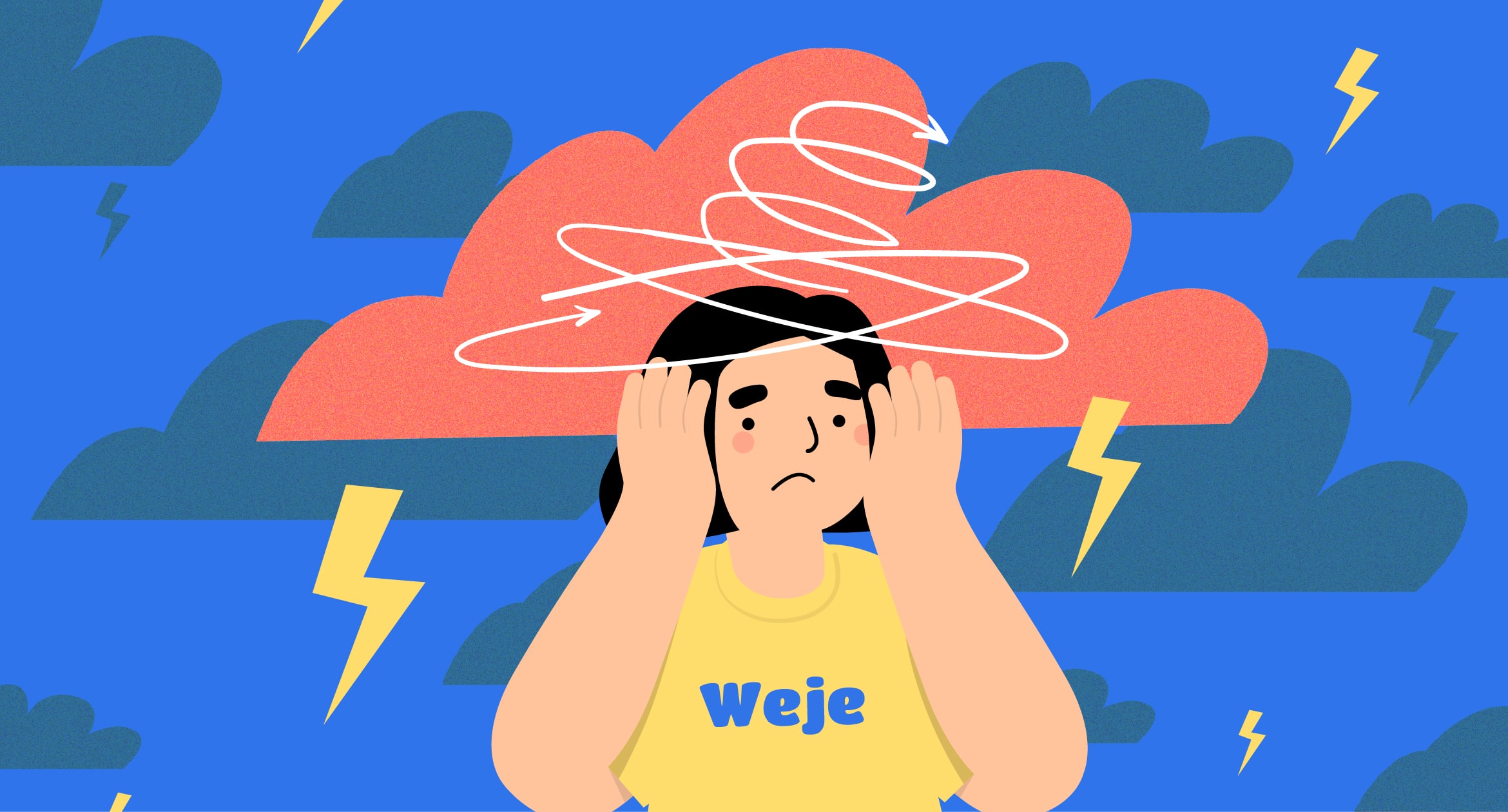Imagine the following mise-en-scène. Say, there was a busy day at work. You accounted for the report, addressed issues, scheduled meetings for the next week, squashed tasks for the team, and even managed to solve a couple of personal affairs in between the routine. In the evening, you returned home and faced a choice on how to relax. The #1 option – to play table games or go out with somebody, and the #2 option – to lie on the couch and mindlessly watch entertaining videos on YouTube or flip through the Instagram feed. If your average day ends up by the second manner, congratulations – a “decision fatigue” term is what you are firsthand aware of.
What is decision fatigue?
When a person is forced to make decisions one after another for a long time, emotional burnout occurs at some point. The fatigue manifests itself in the decrease in critical thinking – an individual turns to be absent-minded, slow-thinking, and his or her ability to solve problems effectively reduces to almost zero. This phenomenon is called “decision fatigue” or “ego depletion”. According to the 2018 decision fatigue study, the case occurs because humans have a limited ability to regulate their behavior. Concerning our everyday life, this means that each subsequent event that forces a person to choose exhausts his or her “daily supply” of willpower.
The best analogy here is the one with a physical body. Our muscles and bones are designed with a unique and given capability. We can expand the physical potential by training our heart with cardio or building muscle with heavy lifting, but still – to a certain limit only. Every workout during the week consumes energy, that’s why professional athletes strictly adhere not only to the training schedule but also to rest.
The same logic applies to the mental load. Hardship stages should alternate with enough rest – and no other way. If the imbalance between the two continues on and on, fatigue, stress, or even depression happen unavoidably.
When the choice becomes a trap?
Today, an average adult-employed American has to deal with, on average, 35,000 choices – every single day. And if we consider 16 hours of activity, it will mean the person faces more than 2k possible courses of action – per hour! These amazing numbers can mislead us so that we’ll accuse modern civilization of being too bothersome and excessively rapid. With regard to a “decision fatigue” term, that is only a half. In fact, a work breakdown happens not just because of the sheer number of decisions to be made, but due to the need to switch between huge amounts of tasks during the day. To be more precise – an average employee has to “wag” between assignments 300 times per working day.
Everybody has at least once encountered a scenario – a dozen opened tabs, a mailbox, and Slack, and one has to swing backward and forwards between these. This “migration” among apps and notifications disperse focus so that you end up with the energy level extremely downed and become unable to concentrate on the matter. The threat is that the fatigue is cumulative. It lowers the overall productivity and leads to the following negative effects:
- procrastination
- decision avoidance
- indifference
- spontaneity.
Prolonged exhaustion fatigue has a long-term negative effect on a mental state and increases sensitivity to external stimuli. In one of the fatigue studies, several groups of people were asked to put their hands into iced water. The group who previously was forced to deal with a series of choices has pulled their hands out of the water much earlier, compared to ones who didn’t experience the pressure before the challenge.
To counteract possible threats it is important to be proactive and practice a few simple tips on how to prevent self-fatigue.
Good habits to protect oneself from decision fatigue
- Reduce alternatives
For you to catch the essence of this tip we suggest reading findings from a frequently-cited “jam experiment” that was published on TED. The point was – the wider the offered assortment of jam jars was, the fewer number of a store’s visitors actually converted into buyers. A logical conclusion suggests itself – to ease the decision and reduce alternatives where possible. Remember that unchangeable Steve Jobs look – white sneakers, blue jeans, and a black turtleneck? This is a truly trouble-free approach, agree. Not only this reduces the time to prepare a set of clothes every day – the shopping time is laid off to a minimum, as well. Of course, the example is a bit exaggerated and is a metaphor for lack of ceremony with choice. But if you feel the decision pressures come to a critical point, why not establish and follow behavioral benchmarks? No matter if they relate to one’s wardrobe or routine tasks.
- Plan affairs beforehand
Starting a day with a scheduling routine dispels anyone. It’s much easier to wake up and follow a ready-made course. Get in the habit of ending the day with planning the next one. Do not spend too much time on it – try to keep within 10-15 minutes. To concentrate upon the process, utilize planning software – calendars, online whiteboards, scheduling visuals, virtual sticky notes, project planning tools, etc.
- Solve important issues in the morning
Have you ever noticed that many successful people are “early birds”? For example, Tim Cook wakes up at 4 a.m. to check his mailbox. Richard Branson, a founder of the Virgin empire, gets up at around 5:45 a.m. The “morning person” list includes famous names like Mark Wahlberg, Michelle Obama, Dwayne Johnson, and many others. They all claim that habitual early wakeups give energy and allow thinking with clarity during the day. As a result – they manage to perform many times better.
If you’re not ready to revise a sleeping regime, try to, at least, reschedule affairs. Start the day with solving the most crucial problems, and leave less priority for last. And do not overload the agenda – whether you like it or not, it’s close to impossible to deal with more than 2-3 serious cases within 24 hours.
- Do exercises in the morning
Yes, we know it’s tough. However, morning sports do make the difference. According to the Harvard Medical School study, physical activity is an essential way to protect and enhance brain health – it prevents cognitive decline and helps to convalesce memory.
- Make small preparations for the future
The advice is the following – stop when you feel fatigued, but make one last small effort and outline the next steps. The truth is that we may not want to start a task because of not knowing where to start. Especially when the execution is prolonged and alternates with several works – at the same time. The recovery consumes time and energy. To lessen future sufferings, take time to prepare a few bulleted points with ideas or resources to continue with.
- Solve tasks in the momentum
Nothing is more fatigued than a backlog of half-solved affairs. You try to bring to an end everything at once, and as a result – nothing is finished. Once you get down to a task, bring it to the end. If you don’t feel ready to make a particular decision – postpone it and switch to something else for a while.
- Prioritize decisions
There are limited hours in a day, hence, to keep up with everything and avoid fatigue, one needs to learn to separate the wheat from the chaff. Decisions prioritization contains 2 parts:
- consolidation
To cope with tasks, you first need to understand how many there are. Assemble all in one place and form a To-Do list.
- examination
Go through every single job and mark it with one of the 4 labels – “to be done”, “to be postponed”, “to be delegated”, and “to delete”. Never forget about the last two options. To clear the agenda is no less important than to fulfill it.
To ease prioritization, use a priority matrix. Group tasks within two dimensions – urgency and importance.
“The Eisenhower matrix for prioritizing tasks”
For teamwork, utilize Kanban boards. This way, you’ll avoid tension associated with constant monitoring and consolidating the progress of all participants in the project.

“Kanban allows to see the whole progress”
- Provide yourself with a quality leisure
Although it seems tempting to lie on a bed all weekend, this is not what will bring your mental state to recovery. The best way to get rid of the work routine is to switch to laboring. Choose some kind of crafting and raise it to the rank of a hobby. Here are just a few – to give rise to your imagination:
- scrapbooking – design photo albums, greeting cards, etc
- upcycling – find a new application for old things or design useful staff out of trashy fragments
- woodworking – what could be more pleasant than the smell of wood? all you need is a few instruments, clay, and some pieces of wood
- soap making – this is an exploitable hobby, indeed; there soap recipes on the Internet for any taste – from perfumed to vegan
- kintsugi – an ancient Japanese art of gluing broken crockery with gold.
“Kintsugi art”, source
- Set time limits for individual tasks
This is the fundamental principle of time management. Assess an approximate duration for every job on your To-Do list. When it comes to the implementation, try to stick within the given period. The point is: even though you can underestimate some, you can get back to that later and draw insights – for future planning.
- Turn away from regretting over the decisions made
Returning mentally to decisions made is a bad idea. Even though it will turn out that the path is incorrect – once you make a decision, try not to come back to it further. Otherwise, you risk getting stuck in vagueness and almost certainly fatigue.
If you doubt, think of the following:
- mistakes are no less relevant than wins; in fact, they are an invaluable experience
- without occasional missteps, we are unable to move forward
- the ability to make a decision can be trained – the more you practice it, the better outcomes will be.
Treat your willpower as an asset. Remember that staying clear-headed and reinvigorated all over the day is the only way you can succeed in either your career or personal life. An attempt to do as much as possible and a vigorous multitask practicing is a desperate strategy – in a long-term perspective.
Published: June 23, 2021




